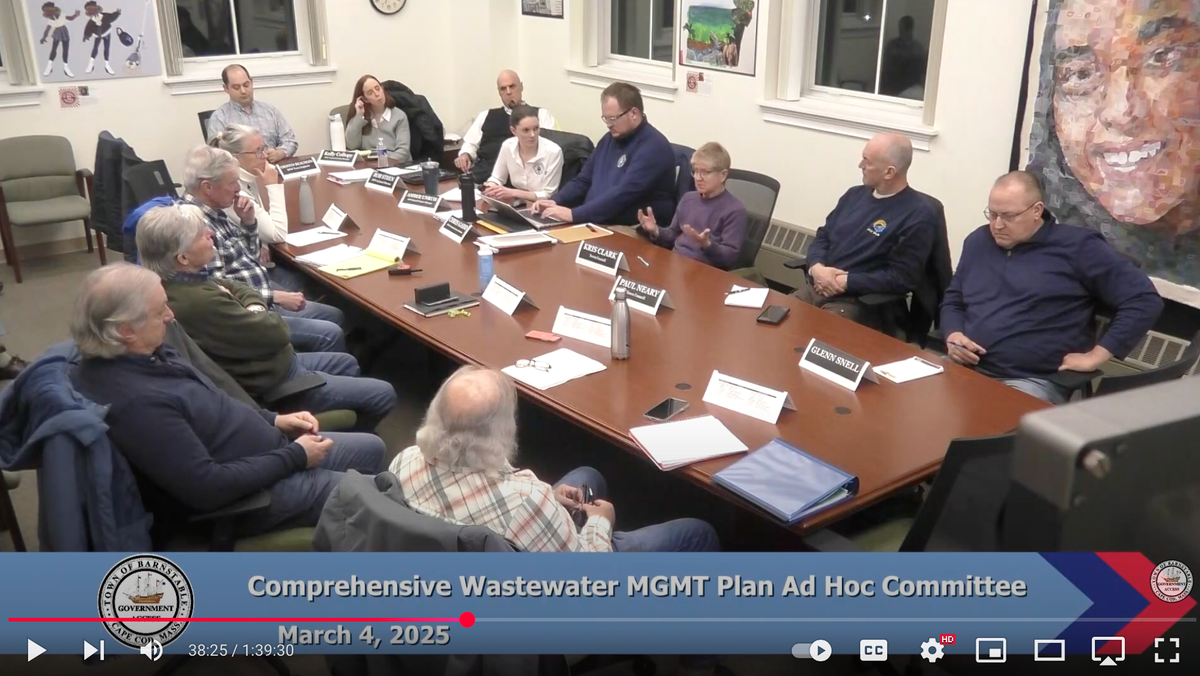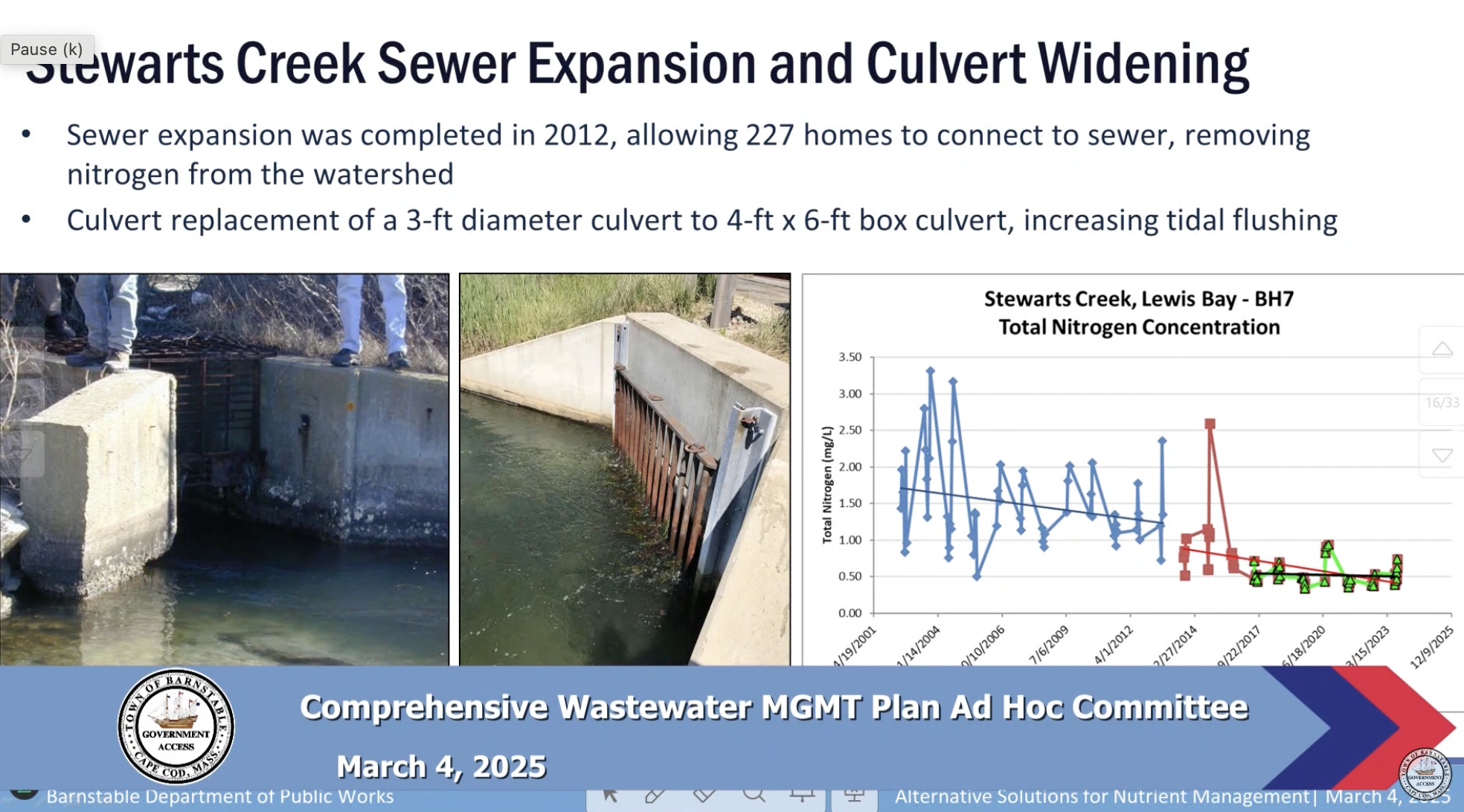Comprehensive Wastewater Management Plan Ad Hoc Committee | March 4, 2025
This meeting focuses on alternative solutions for nutrient (nitrogen and phosphorus) management. The discussion includes reviewing past meeting minutes, scheduling future meetings with the Board of Health, and a detailed presentation on various nitrogen and phosphorus mitigation strategies.


This meeting focuses on alternative solutions for nutrient (nitrogen and phosphorus) management. The discussion includes reviewing past meeting minutes, scheduling future meetings with the Board of Health, and a detailed presentation on various nitrogen and phosphorus mitigation strategies.
Watch the meeting. AI generated summary below. Corrections welcome; see Contact page.
Key Points
- Meeting Logistics: The meeting was recorded, roll call confirmed a quorum, and minutes from the previous meeting were approved. The next meeting was scheduled for March 31st at 6 PM with the Board of Health.
- Nitrogen Management Alternatives: The presentation detailed several non-traditional approaches to nitrogen management, including:
- Cranberry bog restoration: Restoring bogs to enhance nitrogen removal (Marstons Mills River Watershed). A project is anticipated to begin as early as 2026.
- Mil Pond dredging: Removing accumulated sediments to increase nitrogen removal capacity. This project is in the design and permitting phase.
- Warren's Cove dredging and aquaculture: Improving water quality and habitat to support shellfish aquaculture for further nitrogen removal.
- Koutou Bay Inlet widening: While modeling suggested minimal impact, monitoring showed some improvement in water quality at one station, potentially influenced by an oyster farm.
- Stormwater improvements: Nine projects implemented in partnership with the Association to Preserve Cape Cod resulted in a modest reduction in nitrogen.
- Stewart's Creek culvert replacement: Widening the culvert increased tidal flushing and improved water quality.
- Permeable reactive barriers (PRBs): Discussion of PRBs as a potential solution, highlighting the need for careful site selection and consideration of groundwater flow.
- Phosphorus Management: The committee briefly discussed phosphorus management, noting that a pond-specific management plan approach is being used, including stormwater improvements, alum treatments, floating wetlands, and sewer expansion.
- Financial Aspects: Mark Milne, the town's Financial Officer, discussed funding opportunities, challenges in using public funds for private property improvements, and the potential need for special legislation to provide financial assistance to homeowners for IA upgrades. Concerns were raised regarding the new draft Infrastructure Investment Program (IIP) and its potential impact on funding for CWMP projects.
Highlights
- Extensive discussion of the cranberry bog restoration project, highlighting its potential for significant nitrogen reduction.
- Debate on the feasibility and effectiveness of various nitrogen management strategies, including dredging, aquaculture, and PRBs.
- Concerns regarding the new draft IIP and its potential limitations on funding for CWMP projects.
- Discussion of the challenges in using public funds for private property improvements and potential solutions, such as special legislation or property tax exemptions.
- Public comment period addressing concerns about the Massachusetts law prohibiting the use of public funds for private property improvements and potential legal implications.
